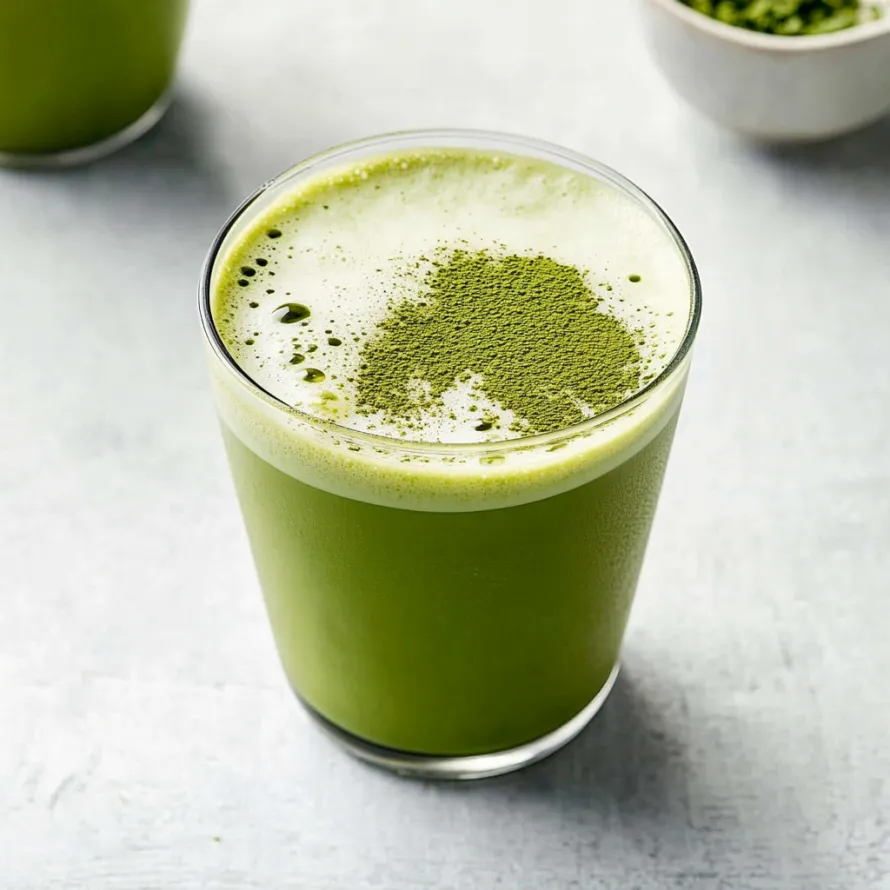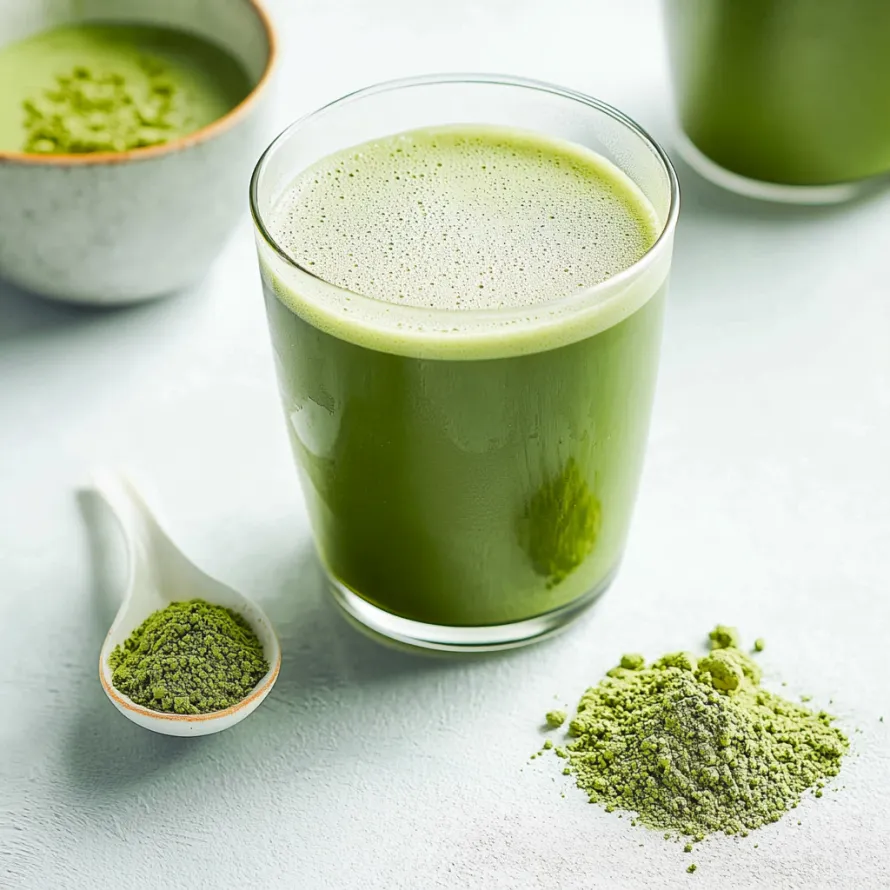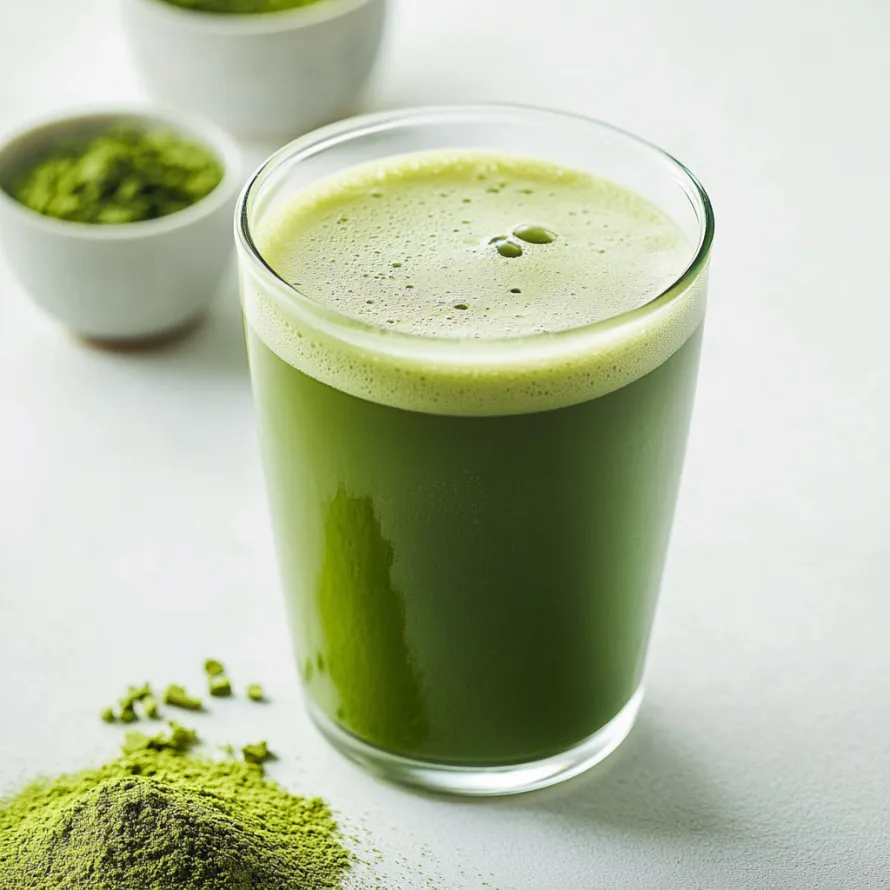 Pin it
Pin it
Made from finely crushed dried leaves, Japanese green tea powder transforms into a dazzling jade dust that turns heads with its special brewing method. Unlike normal green tea where you toss out soaked leaves, this powder mixes right into your drink, giving you all its flavor and goodness in every gulp. The slightly sharp, savory kick creates a one-of-a-kind taste that's gone beyond old Japanese tea rituals to become a worldwide food trend loved by cooks and wellness buffs everywhere.
I found this green powder during a really tough time at my job and couldn't believe how it kept me going without the awful slump I'd get from coffee. Now every morning, I whip up a bowl of bright green goodness that helps me stay peaceful and focused all day long.
Premium Importance
- Ceremonial Grade: Top-quality young leaves make a gentle flavor and velvety feel just right for traditional tea drinking.
- Culinary Grade: A bit bolder taste stands up nicely in recipes where other foods might drown out milder types.
- Color Brightness: Lively green shows it's fresh and handled well, while faded color means it's oxidized or lower quality.
- Smell Test: Clean, lawn-like scent means good storage, but stale or musty hints show poor handling or old age.
- Powder Fineness: Silky powder blends smoothly and stops grittiness in your final drinks or foods.
Classic Brewing
- Tool Setup:
- Pick a broad, shallow bowl with plenty of mixing room and grab your bamboo whisk, which makes perfect froth through its special prong design.
- Powder Serving:
- Scoop one teaspoon of ceremonial grade powder with a small wooden spoon, then push it through a fine strainer to break up any lumps that would make your drink chunky.
- Water Warmth:
- Warm fresh, filtered water to about 175°F or 80°C, since too-hot water burns the delicate tea bits and makes it way too bitter.
- First Mix:
- Pour two ounces of warmed water over your sifted powder, then whisk quickly with back-and-forth motions instead of circles to properly mix and create tiny bubbles.
- Foam Building:
- Keep whisking until light foam covers the top, showing the tea particles are properly mixed and all flavors are coming out.
- Final Sip:
- Add more hot water for regular tea or warm milk for a latte style, with sweetener if you want, though many tea lovers enjoy the complex taste without extras.
 Pin it
Pin it
When I was little, my grandma would make traditional Japanese treats flavored with green tea powder for our family get-togethers. The rich earthiness caught my attention even as a kid, though back then I thought it was too bitter without the sweetness of the wagashi snacks. These days I love how it balances sweet desserts by adding a grown-up depth that keeps them from being too sugary or flat.
Tasty Pairings
This green powder works amazingly well with flavors that boost its natural taste without drowning out what makes it special. White chocolate adds creamy sweetness that smooths out any sharp edges while letting the tea shine through. Coconut brings tropical hints that play interestingly against the grassy tea elements. Vanilla works like a perfect middle-man that ties the tea to other ingredients in fancy recipes with its warm, familiar taste.
Fun Uses
Mix this powder into your breakfast by adding a little to overnight oats with sliced banana and a touch of honey for long-lasting morning energy. Make ordinary pound cake extraordinary by sprinkling sifted powder right into the mix before baking to create beautiful green swirls. Make summer parties better with homemade ice cream that includes this powder for a fancy flavor twist alongside cool refreshment on hot days.
Keeping It Fresh
Store your powder in the fridge in a sealed container away from brightness, warmth, and dampness, which speed up spoiling and ruin both color and taste. Think about moving store-bought powder to a small dark glass jar that limits exposure to harmful elements each time you use it. Try to finish opened powder within two months for the best experience, as even well-stored powder slowly loses its brightness and gets more bitter over time.
 Pin it
Pin it
I started using this powder for health reasons but ended up falling in love with cooking with it as I found out how amazingly flexible it is in both sweet and savory dishes. What still amazes me about this ingredient is how it can both ground and lift up recipes with its unique character. The mix of earthiness, slight sharpness, and savory richness creates a depth that few other ingredients can match, making it truly worth getting to know for any serious home cook or food pro.
Frequently Asked Questions
- → Do I need a bamboo whisk for matcha?
- A bamboo whisk (chasen) makes a creamy foam and smooth texture, but if you don’t have one, try a small regular whisk. The bamboo whisk is crafted to mix matcha without leaving clumps.
- → Why does matcha sometimes taste strong or bitter?
- Bitterness usually happens if the water is too hot, the matcha isn’t high quality, or you’re using too much powder. Switch to water around 175°F, use better matcha, or sweeten it slightly.
- → Can I prepare matcha in advance?
- Matcha loses its fresh taste and the powder settles if it sits too long. It’s best to make it fresh every time for the best flavor and texture.
- → How is matcha different from normal green tea?
- Matcha is made by grinding shade-grown leaves into a fine powder. Unlike regular tea, you consume the whole leaf when drinking matcha, so it has more caffeine and nutrients.
- → What’s the best way to store matcha powder?
- Keep matcha in an airtight, refrigerated container. Shield it from light, heat, moisture, and strong smells. When properly stored, it stays fresh for 2-4 weeks after opening.
- → Can matcha be used for food and drinks?
- Definitely! Matcha is great in smoothies, desserts, baked goods, and more. Use culinary-grade matcha for cooking, as it’s cost-effective and just as flavorful.
